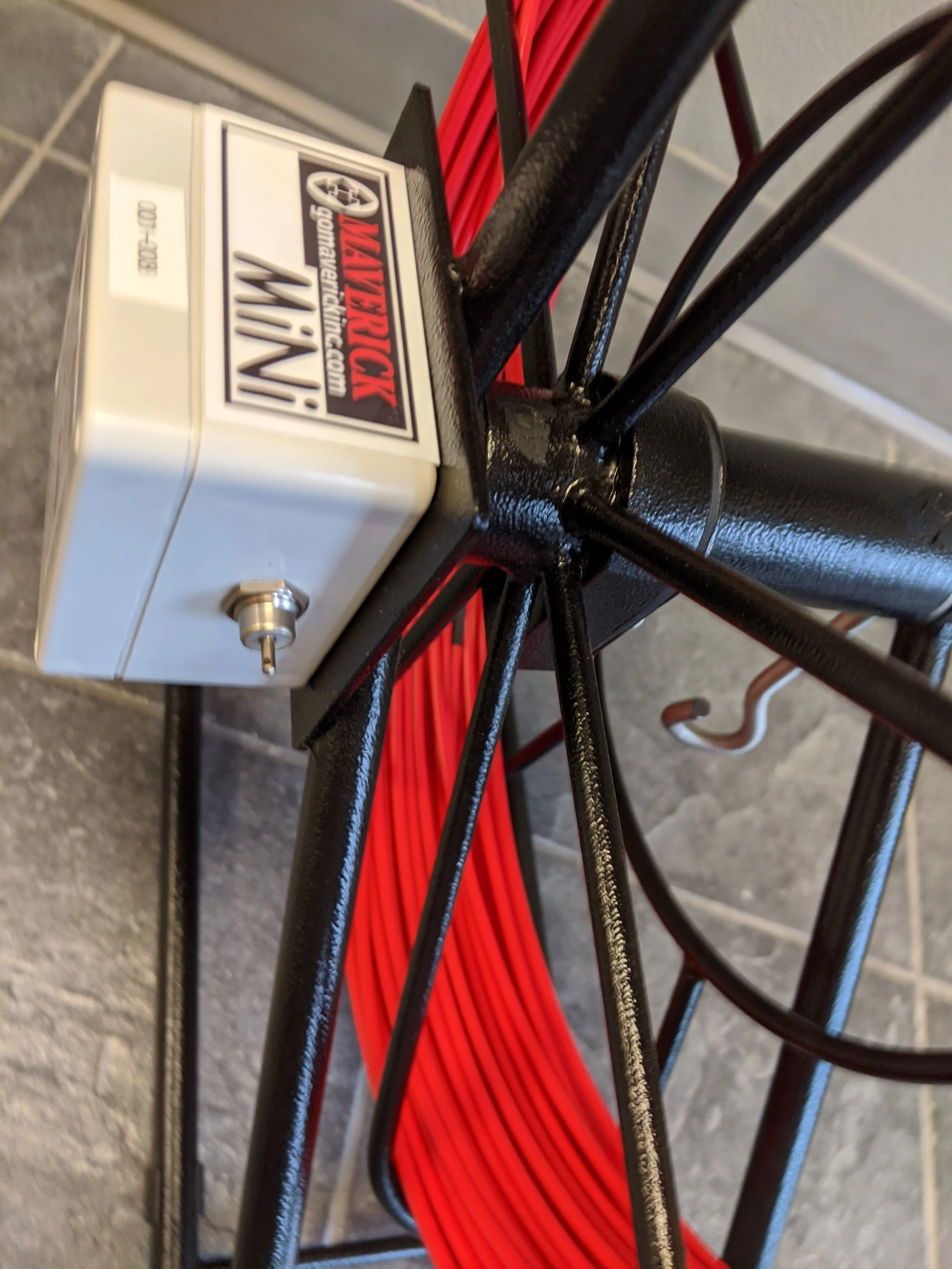Mav "Mini" 275' Reel
The re-designed Tile Finder “Mini” consist of a locatable fiberglass reinforced inductive rod in an easy to carry reel. The Mini is used for locating the route of underground pipes and is ideal for small diameters or tight corners. Primary applications would be floor drains, septic lines or tile inlets. Unfortunately, not very effective in Field Tile.
275′ of 3/16″ Fiberglass Reinforced Inductive Rod
Built-in Slip Ring
17 lbs Total Weight
Flexible Bend Radius
The re-designed Tile Finder “Mini” consist of a locatable fiberglass reinforced inductive rod in an easy to carry reel. The Mini is used for locating the route of underground pipes and is ideal for small diameters or tight corners. Primary applications would be floor drains, septic lines or tile inlets. Unfortunately, not very effective in Field Tile.
275′ of 3/16″ Fiberglass Reinforced Inductive Rod
Built-in Slip Ring
17 lbs Total Weight
Flexible Bend Radius
The re-designed Tile Finder “Mini” consist of a locatable fiberglass reinforced inductive rod in an easy to carry reel. The Mini is used for locating the route of underground pipes and is ideal for small diameters or tight corners. Primary applications would be floor drains, septic lines or tile inlets. Unfortunately, not very effective in Field Tile.
275′ of 3/16″ Fiberglass Reinforced Inductive Rod
Built-in Slip Ring
17 lbs Total Weight
Flexible Bend Radius
The MAVERICK tile finding system is very simple to use. The reel is used for locating the route of underground duct, plastic pipes or clay tiles. This makes it an excellent tool for maintenance and repair of field tile networks. It contains various length of various sizes of rod that is rigid, yet flexible enough to guide into nonmetallic and metallic pipes that are over 1” in diameter. There is a terminal connection and a tension brake on the “V2’ & “MAX” for slowing down or stopping reel rotation.
After inserting the rod into the pipe, apply the 82 kHz signal from the direct connection lead of the transmitter to the terminal and connect the other lead of the transmitter to a ground probe, which then energizes the copper wire in the rod. Turn on your receiver, listen for tone, begin marking both your path and depth.





